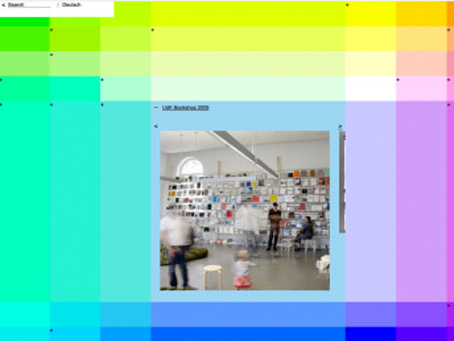Narrative Project: Cross-Media Storytelling
“Before there was history, there was storytelling. It’s essential to our human identity. The stories we tell are how we know who we are.”
– Daniel McDermon, New York Times
PROJECT OVERVIEW
Narrative or storytelling is one of the principal ways we organize our
experience(s) of the world. Narrative helps us communicate with one another,
chart through new experiences, and make order out of the chaos of events,
characters, actions, and time periods that make up our lives.
Narratives come in many forms— written, image-based, diagrammatic, static,
time-based, or any combination. In the traditional model, narrative includes a
beginning, middle, and an end. However, the concept of narrative has evolved
with technological innovations to include explorations of simultaneous, layered,
circuitous, exploratory, and random narrative as well. While narrative is often
bound to a sequential structure, shifts in place or time add depth and complexity
to what might seem at first to be a straight “linear” story. Shifts in narrator or point
of view from which the story is being told can expand how a narrative functions.
INTRODUCTION
This project will challenge you to explore the potential of storytelling in
communication design.
Based on your research, you will develop one story, then experiment and
investigate how the unique affordances of different media affect its form and
message. Each sketch or mockup you make will bring a different aspect of the
narrative (character, setting, plot, mood, etc.) to the forefront, encouraging you
to discover how the design choices you make affect how the story is told. How
can we use a variety of media to create an authentic, exciting experience
for the story’s audience/s? What does it mean to be a visual storyteller?
This project is process-oriented and experimental in nature, encouraging play
with images, typography, color, use of materials, etc. A deep ideation and
sketching process is expected, and will help you experiment with multiple ideas
before choosing a final concept direction for each narrative solution to tell the
story in a compelling and meaningful way.
CONSIDERATIONS
+ What are you interested in (subject matter, message, individual/group
of people, place, etc)?
+ What different strategies can you use to gather and document your
data/raw materials?
+ What different strategies can you use to structure these raw materials to
create a compelling visual narrative?
+ Who is your intended audience/s?
+ What do you want your audience to know/understand/do once they have
experienced your story? (this = the message). Deciding your goal will greatly
help you to develop and design the story. What do you want your audience
to “take away?”
How can you change the way your audience perceives the medium?
What type of story will you tell?
Different Storytelling Approaches:
Storytelling: Biographical
Storytelling: Experiential
Storytelling: Fictional
Storytelling: Informational
Storytelling: An Interview
Storytelling: A Location/Place
Storytelling: A Feeling
Storytelling: A Journey
PROJECT PART 1: PROCESS
Phase I: Research
+ Identify several narrative themes (2-3) you would like to further pursue
+ Use multiple research strategies
+ Conduct field work (if necessary)
Phase II: Ideation
+ From your research, narrow down several directions to further explore
+ Consider each direction’s subject/theme, point of view, goal of your communication
+ Analyze and define the unique affordances of the two media for your selected narratives
Phase III: Content Development
+ Create/collect raw materials (written, visual, audio, tactile, etc.)
What to Collect?
– Imagery (photographs, drawings, diagrams, charts, maps, textures, colors, etc)
– Verbal language/copy (audio transcripts, contextual copy or other language i.e. in artifacts such as signs, conversations, letters, menu’s, instructions, etc.) – Sound/audio – Anything else that you can think of. Be creative!
+ “Build” the narrative
– In order to build your narrative, start by mapping it narrative. Define possible “narrative arc” etc.
– Create a diagram/map of your narrative by analyzing it and visualizing its structure Phase IV: Concept Development
+ Narrative Shaping
+ Create the content – Develop a visual vocabulary for the story: typefaces, colors, symbols, imagery, shapes, textures, etc. – Explore layout and approaches to organizing content (grid)
Phase V: Implementation
+ Development & execution: print, interactive/motion
+ Refinement Cross-Media Design Studio 2
PROJECT PART 2: CROSS-MEDIA APPLICATION
Based on your research, personal interests, target audience, and project goals,
develop one story and then adapt it to two different medias.
The two adaptations should be distinct, well-crafted interpretations of the story
in which the unique affordances of each media are an integral part of your design
solution. (Media choice will be defined by you, and could be motion, interactive,
3D, 2D, experimental or re-interpretations of a particular medium.)
DELIVERABLES
+ Abstract: brief description of your story, research interests, subject, point of
view, target audience, use of media in your strategic design approach, and
description of your solutions (100-150 words)
+ Narratives: two well-crafted narratives based on the same story that utilize
two different media
+ Documentation: your research and design process (sketchbook, etc)
RESOURCES
Lupton, Ellen. Design Is Storytelling
Website for the book:
https://storytelling.design/
Samara, Tim. Making & Breaking The Grid, Second Edition
(We will provide PDF excerpts)
SCHEDULE (Subject to change.)
Consult Class Website regularly http://acmgd.info/cms/

